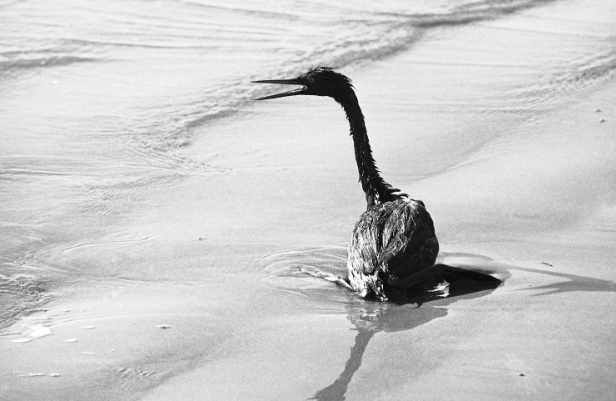
Photo: nbcnews.com
Special to ODP from David Helvarg, first published in the San Francisco Chronicle, January 25, 2019
Fifty years after a California oil spill launched the modern environmental movement, we may finally be moving beyond the age of oil, and none too soon.
In October, the U.N. Intergovernmental Panel on Climate Change, made up of the world’s leading climate scientists, warned that global carbon emissions would have to be cut by 45 percent by 2030 if there’s any hope of keeping planetary warming at a dangerous but less than catastrophic level.
Luckily, job-generating renewable energy now has become competitive with or cheaper than most forms of fossil fuel. Progressive Democrats are also calling for a Green New Deal that aims to transition the U.S. to a clean-energy economy, addressing both climate change and inequality.
…
For those who think a rapid energy conversion is not feasible, consider how in 1850 whale oil was the lubricant of the machine age and the light source for many of America’s finest homes, public buildings and streetlights. Thirty years later, rock oil (petroleum) had completely displaced it as a source of both energy and economic expansion.
Soon the demand for petroleum had taken to sea, with the world’s first offshore oil-drilling piers built in Summerland (Santa Barbara County) in 1896. It would take more than half a century to persuade Californians living just north of Summerland in the city of Santa Barbara that offshore drilling had become a safe technology.
It hadn’t.
On Jan. 28, 1969, just a year after the federal government leased offshore drilling tracts in the Santa Barbara Channel, and after it issued waivers allowing Union Oil (now part of Chevron) to reduce the length of its standard pipe casing from 500 to 15 feet, a crew drilling their fourth well hit a snag. Oil and gas exploded up the pipe string. When the blowout was capped, the oil began leaking below the shortened casing. Within days some 3 million gallons came ashore, covering 35 miles of sandy beaches with a viscous black coating of crude 6 inches thick. The oil slick gave the ocean waves a sludgy pulse and filled the air with an odor akin to gasoline.
When President Richard Nixon made an appearance after the spill in March, he was met by thousands of silent, angry residents, some carrying signs reading “Get oil out!”
The sight of Santa Barbara’s dying, oil-covered seabirds was followed five months later by TV images of the polluted Cuyahoga River in Cleveland catching fire. These events horrified Americans: The modern environmental movement was born.
After bipartisan actions in the 1970s to clean our air, water and protect wildlife and human health, environmental stewardship evolved from a social movement to a societal ethic, although one that, like “love thy neighbor,” was often ignored in practice.
…
The Trump administration’s ongoing push to open up more U.S. waters to drilling and acoustic oil surveys that can kill fish and whales has sparked opposition all along the eastern seaboard as well as in California, Oregon, and Washington.
Of course, in the wake of the Santa Barbara spill of 1969 and subsequent major spills, including Ixtoc in the Gulf of Mexico in 1979, Exxon Valdez in Alaska in 1989, Deepwater Horizon in the Gulf of Mexico in 2010 and another Santa Barbara spill in 2015, the focus remained on energy versus pollution.
Only now we know drilling for hydrocarbons is also a product-liability issue. Used as directed, fossil fuels spill carbon dioxide into our atmosphere, heat our air, alter our weather, dry our forests and soils and acidify our seas.
The first steps in transitioning to more abundant renewable energy should include the early elimination of the dirtiest and most dangerous forms of fossil fuel in terms of worker safety, pollution and carbon emissions. That would be coal, tar sands, and offshore oil. In terms of protecting jobs for those energy workers, the easiest part for the Green New Deal would be to retrain roughnecks and roustabouts from offshore rigs for similar jobs such as offshore wind turbine technicians and line handlers.
Growing numbers of citizens are mobilizing around these creatively disruptive ideas, updating the Santa Barbara spirit of 50 years ago with demands that our elected officials get in line with market trends and entrepreneurial opportunities to Get Oil Out!
David Helvarg is an author and executive director of Blue Frontier, an ocean conservation group. His books include “The War Against the Greens” and “The Golden Shore — California’s Love Affair with the Sea.”
February 5, 2019 » California, Green New Deal, oil drilling, oil spill, Santa Barbara

